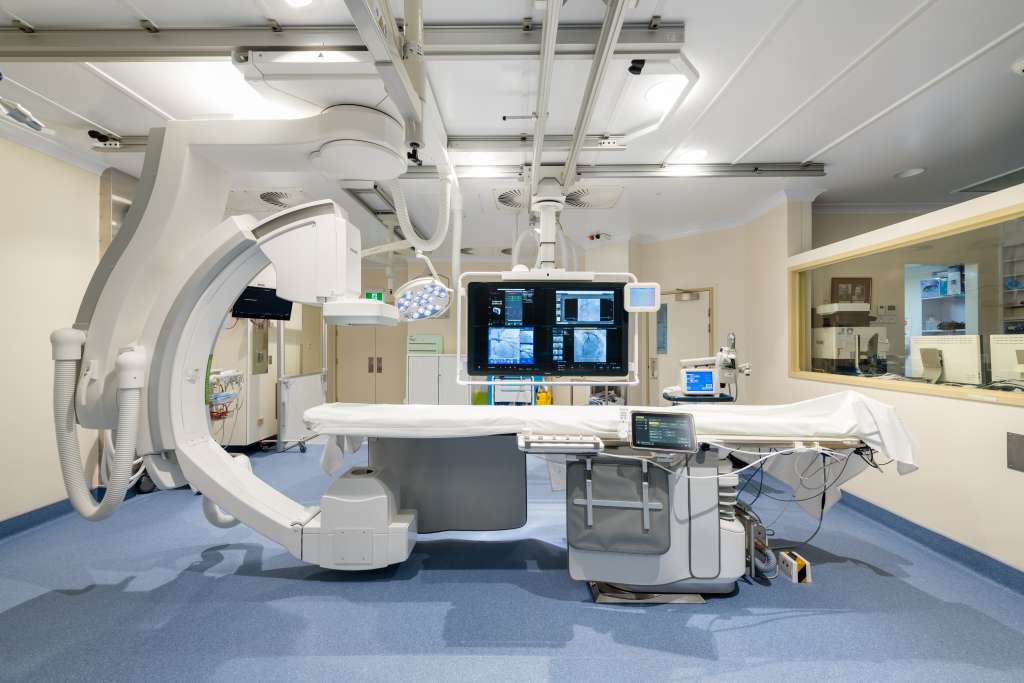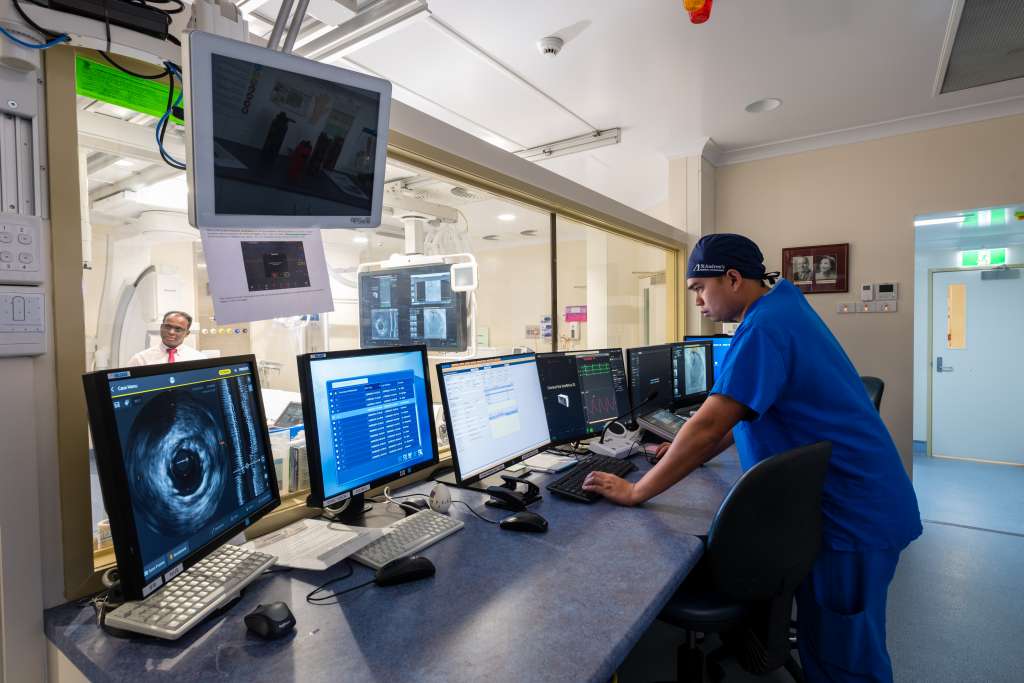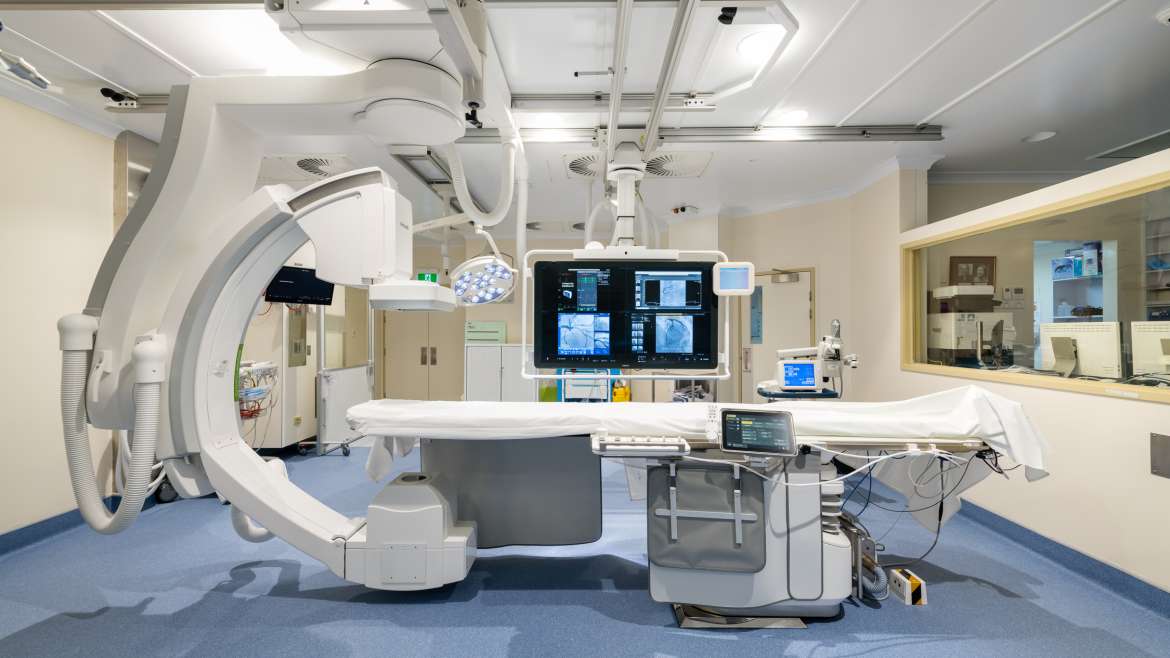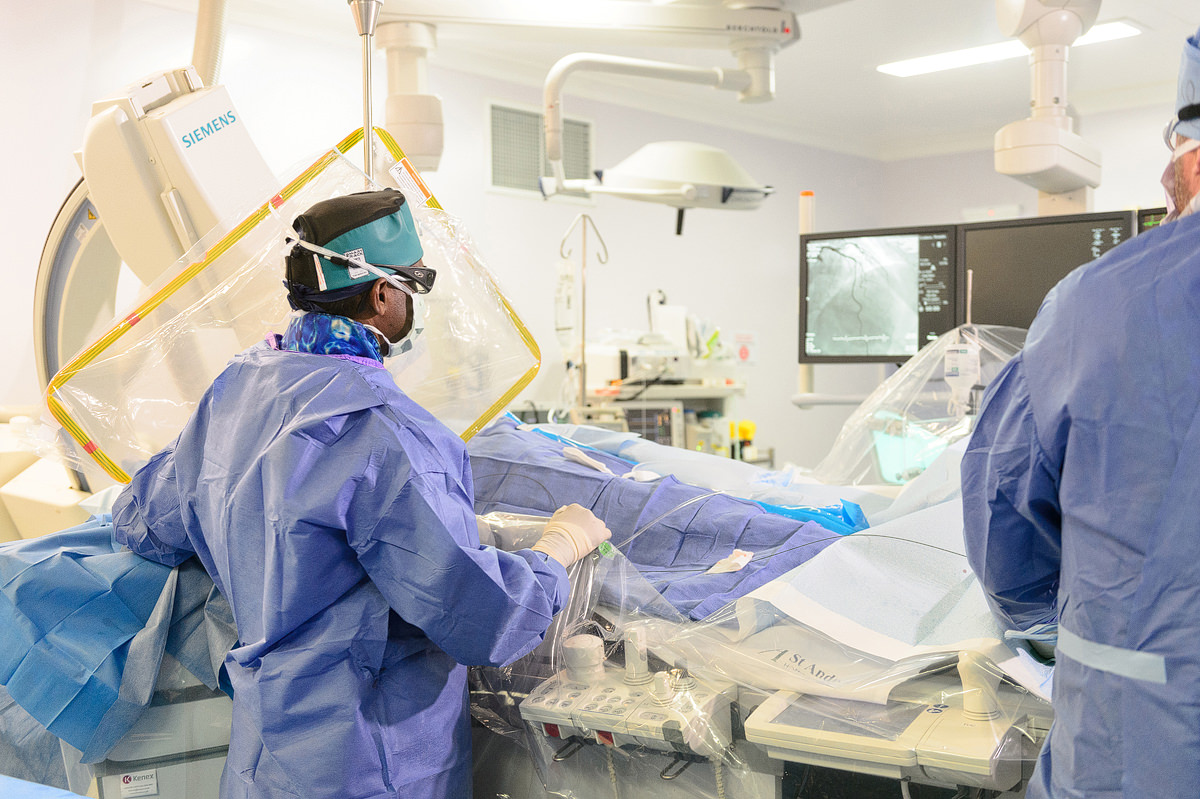For more complex cardiology issues, St Andrew’s Toowoomba Hospital offers the only interventional Catheter Laboratory facility on the Darling Downs which enables cardiologists to perform diagnostic and interventional procedures.
The Catheter Laboratory is equipped with the latest in advanced digital technology enabling accurate imaging of blood vessels throughout the whole body. Cardiac catheterization is a technique used by cardiologists to determine how well the heart is working. This technique involves inserting a catheter into a large blood vessel that leads to the heart to measure blood flow and pressure, remove blood clots and plaque and widen arteries with stents and balloons.


Cardiac procedures that are performed in the St Andrew’s Catheter Laboratory include:
- Angiograms – An angiogram is a special type of X-Ray using dye to show if there is narrowing of the coronary arteries. Narrowing arteries can cause chest pain and a blockage can cause a heart attack.
- Angioplasty (or balloon angioplasty) – This is a procedure used to widen narrowed or obstructed arteries or veins.
- Stents – A stent is a small mesh tube that is used to treat narrow or weak arteries to keep the artery pathways open.
- Pacemakers- A pacemaker is a small device that is placed under the skin below the collar bone and connected to the heart by leads to help control abnormal heart rhythms.
- Implantable Cardiac Defibrillators (ICD) – An ICD is a battery-powered device placed under the skin that keeps track of the heart rate. Thin wires connect the ICD to the heart. If an abnormal heart rhythm is detected the device will deliver an electric shock, and by doing so, allows the heart to resume a normal heartbeat.



